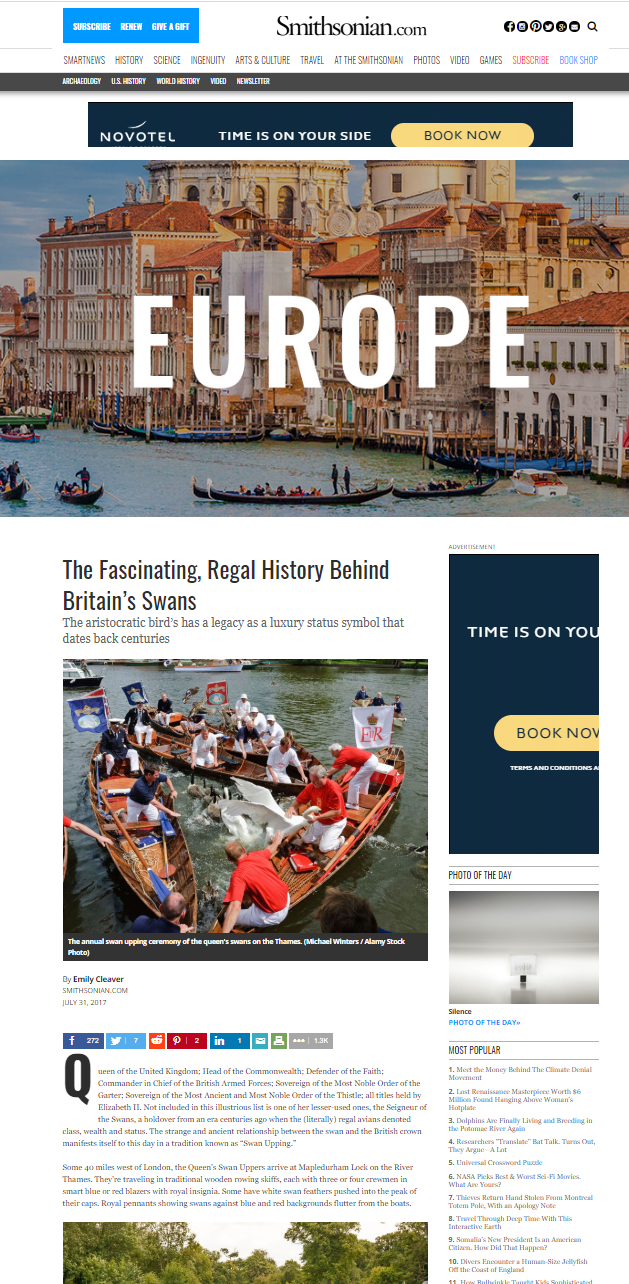SMITHSONIAN MAGAZINE
The Fascinating, Regal History of Britain’s Swans
ueen of the United Kingdom; Head of the Commonwealth; Defender of the Faith; Commander in Chief of the British Armed Forces; Sovereign of the Most Noble Order of the Garter; Sovereign of the Most Ancient and Most Noble Order of the Thistle; all titles held by Elizabeth II. Not included in this illustrious list is one of her lesser-used ones, the Seigneur of the Swans, a holdover from an era centuries ago when the (literally) regal avians denoted class, wealth and status. The strange and ancient relationship between the swan and the British crown manifests itself to this day in a tradition known as “Swan Upping.”
Some 40 miles west of London, the Queen’s Swan Uppers arrive at Mapledurham Lock on the River Thames. They’re traveling in traditional wooden rowing skiffs, each with three or four crewmen in smart blue or red blazers with royal insignia. Some have white swan feathers pushed into the peak of their caps. Royal pennants showing swans against blue and red backgrounds flutter from the boats.
The blue flags represent two of London’s ancient trade guilds, the Worshipful Companies of Dyers and Vintners. The guilds are some of the richest and most powerful organizations in London, and since at least the 15th century have been granted the right to own mute swans on the Thames. (Mute swans have the elegantly curved necks, orange beaks and white feathers that most people think of when they picture swans.) The red flags are for the Queen’s Swan Warden, the man charged with counting all the mute swans on the Thames between Sunbury Lock in West London and Abingdon in Oxfordshire, a 79-mile stretch of river that takes five days to navigate. […]


